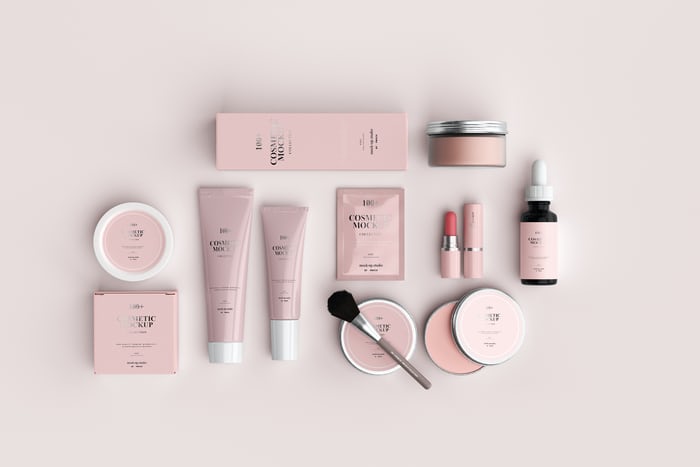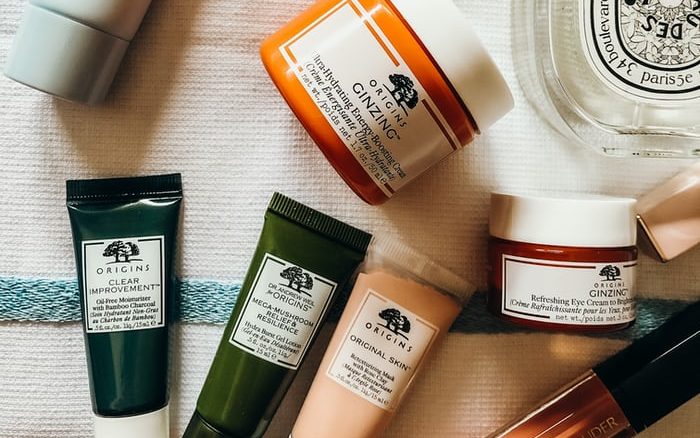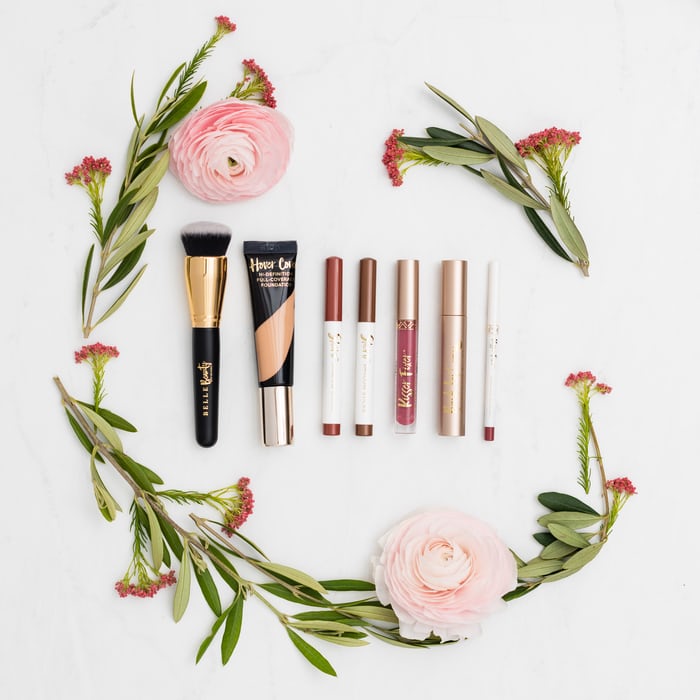Are you planning on selling cosmetics? Are you still unsure how to label them as per cosmetic industry standards and regulations but want something attractive and informative at the same time?
If so, continue reading for an in-depth understanding of how to list your product ingredients on cosmetic labels!
For centuries, people have used natural ingredients to enhance their physical appearance.
Over time, these products were packaged in containers and sold to consumers as cosmetics and personal care products.
Many of these products are still sold today, but how must ingredients be listed on cosmetic labels?
Well, listing the ingredients of your products is a pretty straightforward process: however, there are a few things you need to know.
Let’s explore how to list the ingredients of your product and how it should be done on cosmetic labels:
How Must Ingredients Be Listed on Cosmetic Labels

By law, all cosmetics manufacturers and distributors are required to list their products’ ingredients on the container or product packaging.
It ensures the consumer is aware of every ingredient in their product. This way, they can make an informed decision about whether or not they want to bring it into their home.
Therefore, when you are choosing to label your cosmetic or personal care products,
it’s important that you list all ingredients correctly and adhere to any specific regulations your state may have governing the contents of your products.
What The Law Says:
Cosmetic products are regulated by the Food and Drug Administration (FDA) under the Federal Food, Drug, and Cosmetic Act.
One of the regulations of this act is that all cosmetic manufacturers and distributors have to list their products’ ingredients on the container or product packaging.
This rule applies to all cosmetics, including lipsticks, eye shadows, foundations, and moisturizers for both men and women.
Read: Making skin care products courses

Here is a quick overview of you must list your Ingredients :
1: You Must List all The Ingredients Used
Before anything else, you must list all the ingredients used during production. These ingredients include any part of the product, be it an ingredient or just something used to hold the product together.
This includes any solvents, semi-finished products, additives, and colorants.
The list should contain all of the ingredients used in the product, even those discovered during the production process, and appear only at trace levels.
This means that any cosmetic product you produce must list all of its ingredients on the label, including inactive ingredients, which do not have any impact on the product’s appearance or its beneficial qualities.
Basically, anything that has been added as a raw material to your product during production time must be listed as an ingredient on cosmetic labels.
Read: How to make lip balm without beeswax

2: Listed in Descending Order of Concentration
The ingredients in your product have to be listed from the highest concentration to the lowest. The highest concentration ingredient must be listed first and then move down from there.
The ingredients should be listed in descending order of concentration, with the first ingredient being the most concentrated and the last being the least.
For instance, if water is the ingredient with the highest concentration, it should be the first ingredient on your list.
Suppose you have an ingredient with a concentration of 9.8% and a second ingredient with a concentration of 1.4%.
In that case, the first ingredient should be listed as the first ingredient, with the second being listed as its second ingredient.

3: Ingredients Have to be Listed by Their Common or usual Name
To list your ingredients correctly, you must use the ingredient’s common or usual name. This is to avoid any confusion with the consumer when it comes to identifying and determining your ingredients.
The common or usual name must be labeled clearly and must correspond to the title provided in a list of ingredients.
According to the FDA’s official website, cosmetic companies must list their ingredients using the name that is by law considered the “common or usual name.”
This ensures that whatever ingredient you’re using and its source is, it has a “general acceptance” among consumers.
This is to avoid any confusion with the consumer when it comes to identifying and determining your ingredients.
Read: Does heating shea butter damage it?
4: Ingredients Have to be Listed by Chemical or INCI Names
The ingredients list must be listed using their chemical names if they have a scientific name.
If an ingredient does not have a scientific name, it should be listed by its common nomenclature, also known as the International Nomenclature Cosmetic Ingredient (INCI) name.
The INCI names are unique to each ingredient, thus enabling consumers to easily spot them on the ingredients list.
This is because every ingredient has its own official chemical or INCI name, which can be looked up in an established database of chemicals known as The Cosmetic Ingredient Dictionary.
This is to help consumers find the ingredients that are of concern, for example, those that may be hazardous or cause an allergic reaction.
A good example is Water, which is required to be listed as “Water(aqua)” on the label.
4: Ingredient Names Should Be Listed Using All UPPERCASE Letters
The FDA recommends writing ingredient names using all capital letters.
This is done to help consumers distinguish between different ingredients that are spelled similarly, such as Water vs. Wheat or amino vs acids.
Manufacturers must be especially careful when writing ingredient names because of consumers’ lack of knowledge about the cosmetics industry and their products.
The FDA states that the name of every cosmetic product’s ingredient should be “conspicuously” printed on its packaging or labeling to allow consumers to make an informed choice each time they buy a product.
As you can see, this is crucial for cosmetic companies to do if they want to stay safe from legal issues and possible recalls.
Frequently Asked Questions about Cosmetic Labels Regulations
Do Beauty Products Have To List All Ingredients?
Yes, all ingredients are required to be listed on the labels of beauty products sold in stores. This includes both domestically manufactured and imported products.
Is It Okay To Replace An Ingredient With A Similar One?
The FDA discourages such practices as they mislead consumers into thinking that they’re getting a different (and perhaps improved) product than what’s advertised.
Why Is It Important To Have A Complete Ingredient List?
It is important to have a complete ingredient list because this helps consumers identify and avoid ingredients that may be harmful or cause allergic reactions. In addition, it safeguards against product recalls resulting from faulty or incomplete labeling.
Hopefully, this article has cleared up any confusion you had about the FDA‘s guidelines on How must ingredients be listed on cosmetic labels?
As you can see, there are certain rules regarding the usage of ingredients in cosmetic products.
The reason why all these regulations have been set is to protect manufacturers as well as consumers from making purchases based on false advertising or incomplete labeling practices.
Read: Cocoa butter smells bad

